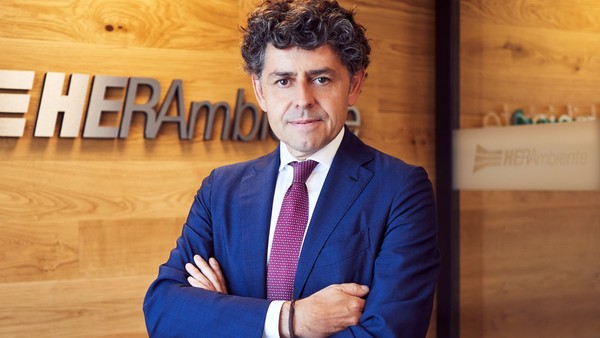FIB3R, THE CUTTING-EDGE PLANT THAT REGENERATES CARBON FIBER
First of its kind in Europe, the Hera Group plant in Imola recycles composite waste to obtain carbon fiber, thus helping to bridge the gap between the demand and supply of virgin material and reducing the environmental impact.
Recycling and regenerating carbon fiber on an industrial scale: this is the goal of Fib3r, an innovative plant - the first of its kind in Europe - inaugurated by Hera Group in Imola, in the province of Bologna, in March 2025. The name of the facility refers to the three Rs of sustainability - recover, reduce, reuse - suggesting the strategy of increasing circularity within distinct strategic sectors of Made in Italy, from automotive to aerospace, from boating to furniture.
HOW CARBON FIBER IS REBORN
Developed by the subsidiary Herambiente, the leading national operator in waste recovery and treatment, The FIB3R plant takes end-of-life waste and turns it into regenerated carbon fiber.
At the heart of the process is an innovative pyro-gasification system carried out inside a 60-meter tunnel. The first stage, pyrolysis, separates the carbon fiber - more resistant to heat - from the resin. The second phase, gasification, results in a regenerated fiber of extremely high quality: pure, shiny and completely sustainable. In a perfect example of the circular economy, the decomposed resin in gaseous form is reused to generate part of the energy required by the process, while any dust particles left on the fibers are extracted and sent to an abatement system.
Since the original characteristics of lightness and high resistance remain virtually unaltered, the regenerated product is apt for the same high-performance applications as the virgin material, in a potentially infinite reuse cycle.
ENERGY SAVING AND TRACEABILITY
The plant required a total investment of 8 million euros, with an EU contribution of over 2.2 million. It can produce 160 tons of recycled carbon fiber per year, reducing greenhouse gas emissions by 74% and energy use by 75% if compared to the production of virgin fiber, a highly energy-intensive activity due to the high temperatures. Furthermore, producing virgin carbon fiber means using fossil raw materials and increasing landfill waste, as processing waste is almost exclusively disposed of.
What makes Fib3r truly unique is its full traceability: the treated material is assigned a dedicated QR code that shows technical characteristics, weight and origin.
CLOSE LINK WITH THE TERRITORY
To develop the plant, Herambiente collaborated with the Department of Industrial Chemistry of the University of Bologna and with Curti Costruzioni Meccaniche, a Ravenna-based company that produces automatic machines for industrial applications.
“Previous attempts to recover carbon fiber led to the creation of processing lines that raised questions on the quality of the regenerated material: today, after a three-year journey, we reached a level of excellence in the sector,” explains Andrea Ramonda, CEO of Herambiente. “Starting from university research conducted at lab scale, and moving through a pilot phase, we have created a line that marks a turning point. This achievement proves how innovation and collaboration among companies, universities and institutions can turn a sustainable idea into a concrete and highly competitive industrial solution”.
The relationship with the territory does not end here, as Ramonda explains: “Embedded within the ecosystem of the Motor Valley, the project responds first to the needs of the main players in this sector”.

It is in fact primarily the automotive sector, particularly in Emilia-Romagna, that in recent years has been increasingly using carbon fiber composites in production processes. “However, generally our customers are all the players along the value chain of carbon fiber reinforced composites: from large companies that handle the processing, to brands that make finished products.”
The customers themselves led Herambiente to develop Fib3r to solve the problem of increasing waste. “We aim to repurpose about 50% of what enters the plant as new regenerated fiber, at the same time helping to bring back to Italy the production of this material, currently imported from Asia. Among others, we work with Leonardo Group. Through its Aerostructures Division, it launched a project to recover carbon fibers used in reinforcing polymer matrix composites. These are ultimately used to build components of the best-known civil aircraft in commercial aviation, such as the stabilizer of the ATR turboprop, the fuselage and horizontal stabilizer of the Boeing 787, and the tail planes of the Airbus A220.
SUSTAINABLE AND COMPETITIVE BUSINESS MODELS
Investing in circular infrastructures such as Fib3r means increasing the resilience of production chains, reducing dependence on imports of critical raw materials and creating value through sustainable and competitive business models.
The project fits perfectly into the strategy of Herambiente and, more generally, of the Hera Group. The latter has in fact allocated 2 billion euros of investments to resource regeneration in its 2024-2028 Business Plan.
“For years we have been pioneering the recovery of dry fractions from separate waste collection, the recovery of wet waste with biodigesters - which we transform into biomethane and compost - and also the recovery of plastic with our subsidiary Aliplast, which represents excellence in the mechanical recycling of industrial waste, such as plastic film, PET and soon also rigid plastics”, concludes Ramonda. “With over 100 certified plants capable of treating any type of waste and over 7 million tons of waste treated in 2024, we count on the largest and most modern set of facilities in the country for the treatment and recovery of materials.”
Article written by Emanuele Bompan
This Blog is an editorial project developed by Ecomondo with Renewable Matter.

